SHOT TO REMEMBER
By Rob Feld
Smack dab in the middle of Vince Gilligan's final episode of Breaking Bad, "Felina," is a quiet but pivotal scene without which the entire series would have been weakened; maybe even meaningless. After seasons of lies to himself and his family, the series protagonist, Walter White, states his truth.
From the first of its 62 episodes, in the name of providing for his family, Walter had made a self-indulgent choice to become a methamphetamine kingpin. That choice and its inevitable results devastated the lives of everyone he touched, starting with the wife and children for whom he claimed to be providing. Walter's cognitive dissonance drove the narrative's underlying tension, but in this scene before Walter embarks on whatever redemptive journey is left for him in life, it had come time for Gilligan to confront and resolve that tension for good.
A hunted man, Walter has returned home to settle a score and to say goodbye to his wife, Skyler. Gilligan orchestrates an understated and conflicted but highly emotional farewell, in which Walter finally admits to himself and to Skyler that he had in fact led the life of a drug kingpin for himself; the danger, the puzzle and the power had made him feel alive. With that admission to Skyler, one of the people he harmed most, both he and the series were ready to meet their ends.
"I wanted this farewell to be as quiet as possible," explains Gilligan. "It's a scene between two of the best actors who ever worked in television, in my biased opinion. I wanted to keep it simple, to stay out of their way, let them work their magic and not do anything fancy. It's the calm before the pyrotechnics of the final act when all that's left to do is kill the bad guys. But, certainly in emotional terms, it could be argued that this is the final scene of Breaking Bad."
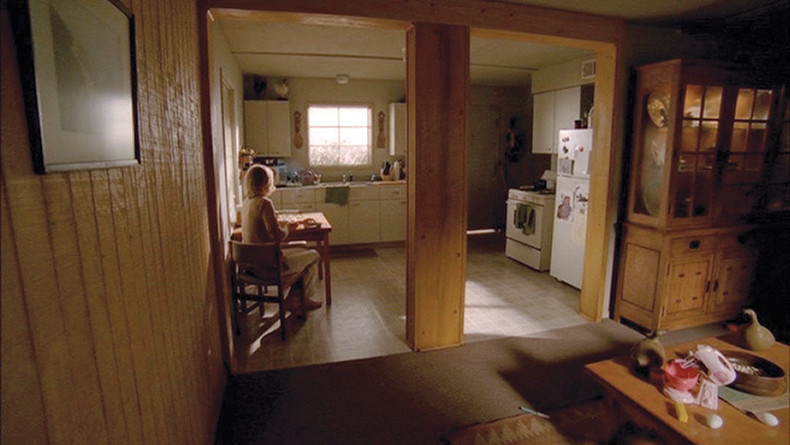
Skyler has just gotten off the phone with her sister, who called to warn her that Walt is back in town. We scouted a tiny apartment in Albuquerque, which had this column dividing the kitchen and the living room. I was pondering it, and I called for my location manager, "Has anyone seen Christian?" And I heard a voice say, "Right over here, boss." I walked a few steps forward and he was revealed to be standing behind this column. At that moment, I fell in love with the idea of it. Our production designer, Mark Freeborn, recreated the exact apartment onstage, a foot or two longer with the ability to fly the wall where the camera is located. I've gotten a lot of love for this shot, but sometimes it's better to be lucky than good.
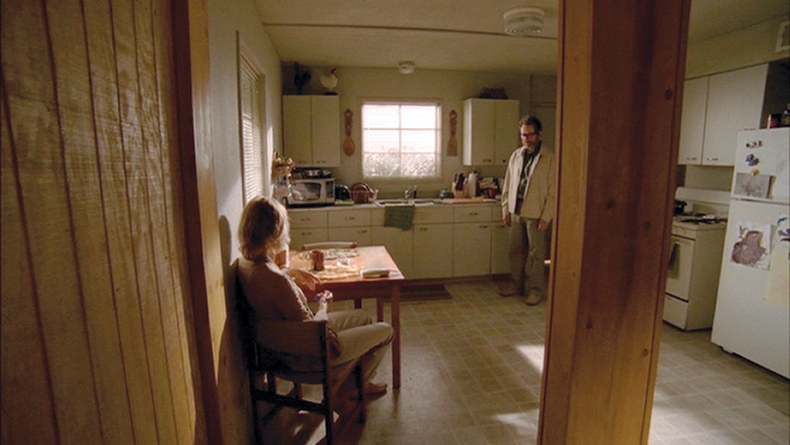
We realize Walt is already here when he is revealed behind the pillar on the push-in. Bryan Cranston could sense where the lens was out of the corner of his eye, so he took his own cue; Bryan speaks his first line just as his face is about half in frame. You worry about these things, then the guy nails it on the first take. We would rehearse a bit, maybe run the shot once or twice before committing it to film, but you never have enough time in TV. I do mean film, by the way; Breaking Bad was shot on 35-millimeter Kodak stock. HD video is quite impressive, but I do miss film. There's something about it that still feels magical.
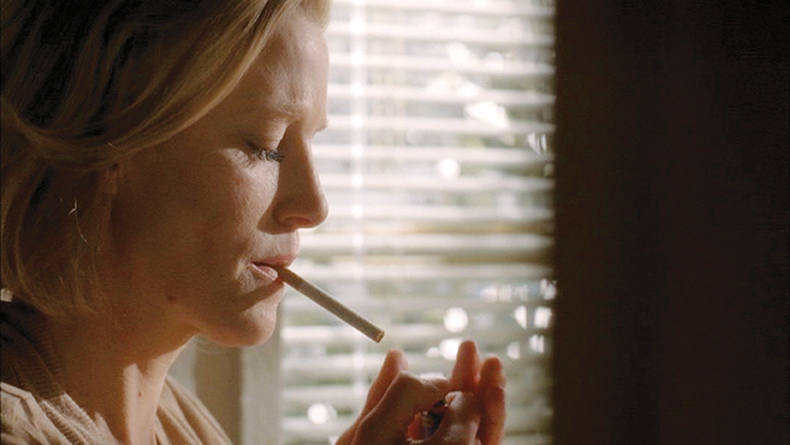
Now we're into a close profile of Skyler, shooting past that column. We're on a longer lens here because I wanted the column in frame and I wanted to throw the edge of it as far out of focus as possible, which was tricky because the set was fairly small. I don't think we wound up flying any of the walls except for the corner where the master shot was photographed, because we didn't want to take the extra time. So, we went as long as we could here, but no longer. On Breaking Bad, the lighting in any given frame always incorporated both the darkest darks and the brightest highlights. I think of it as the yin and yang of light, which was (DP) Mike Slovis' philosophy with every scene.
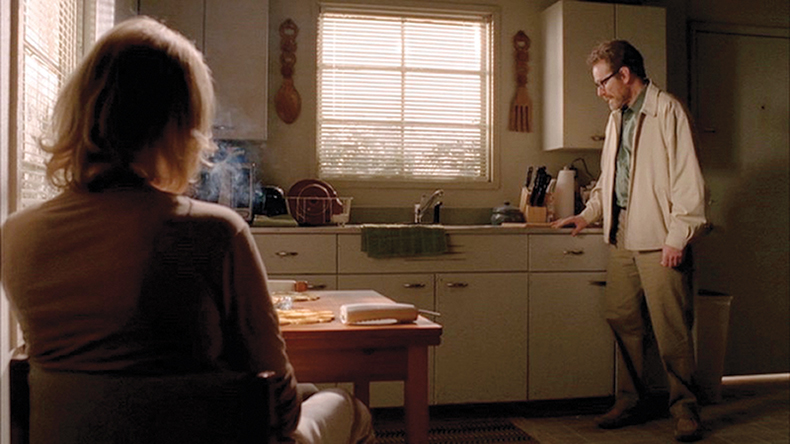
All the shots were planned in advance so that we could keep to the schedule, but I don't storyboard because I tend to get obsessive with my drawings and then run out of time. What I typically do is take lots of photos of a location, and also spend as much quiet time within it as possible. Then I draw a plan-view and little camera circles with arrows pointing this way and that. On Breaking Bad, we paid a lot of attention to color. We'd get the DP, the production designer and the costume designer together to have color palette meetings at the beginning of each season. Here, by the finale, Walt has gone from beige to green to red to black, and back to beige again. For Skyler, who typically wore various shades of blue, we sucked the color out of her with a beige sweater and off-white blouse. Life had taken a bitter turn for them, and we wanted the wardrobe to reflect that.
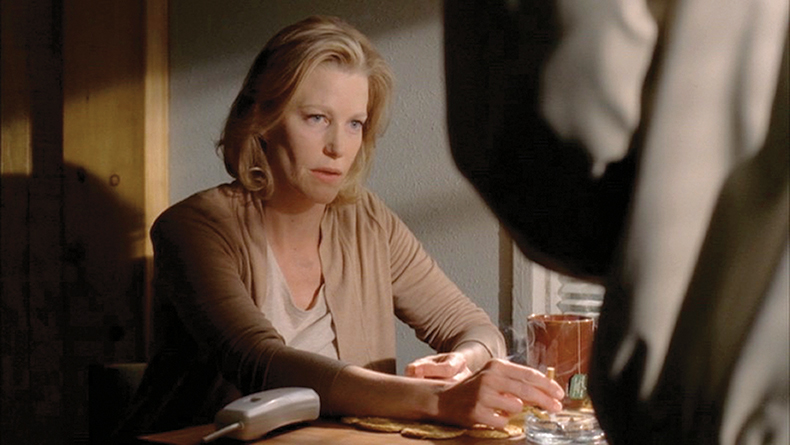
Now we're into Skyler's wider single. We always liked having a bit of the other actor in frame no matter whose shot it was. I respond to that in terms of geography; I want to know where the actors are in relation to one another. As a viewer, when I'm faced with too much clean coverage, it makes me begin to feel like everybody is on their own little island, in their own separate scene. So I tend to go overboard in the other direction.
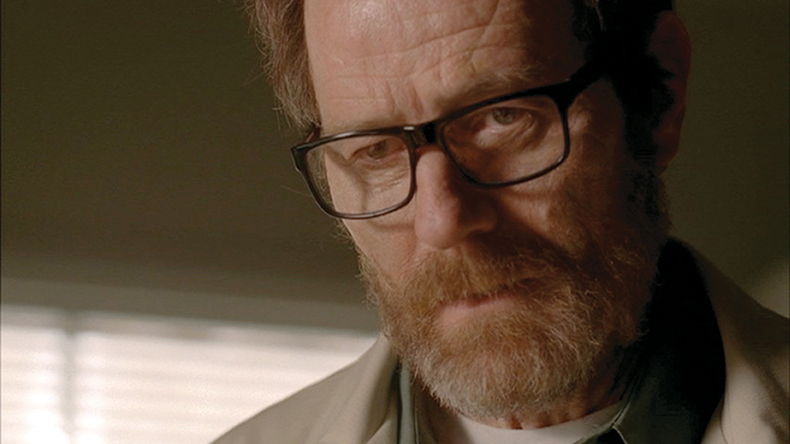
The X-Files developed a claustrophobic look during the years I was there, with many super-tight shots. I wanted to go a completely different way—wide, like a Sergio Leone or John Ford Western. That said, this is good old X-Files coverage, cutting into Walt's forehead. If we were ever going to earn it, it was here, watching Walt say goodbye to his wife. Michelle MacLaren, our go-to director, would watch Once Upon a Time in the West with me. We'd comment on Leone's ability to cut between extremes; from the widest wide to the tightest tight. If you're going to go to extremes, you damn well better go to both ends of them.
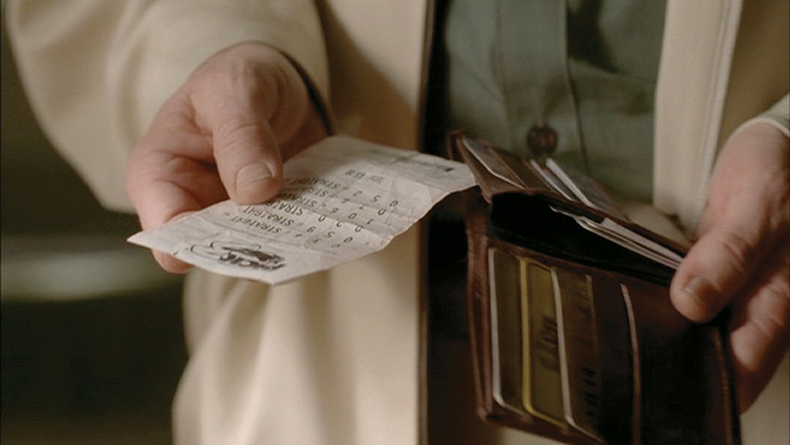
We tilt down to Walt's hands as he pulls out this lottery ticket containing the GPS coordinates of Hank's final resting place. On the day, I intended to get some fancy specialty shot of Walt's hands. We were running for our lives as usual and our camera operator, Andy Voegeli, said, "Why not just tilt down here?" He showed me and I thought, "Well, hell, this is as simple as it gets, but it works." I include it here because once you get off Bryan's face and onto his hands, I find that his hands are every bit as expressive as his face is. There's something I just love about the way he spreads his fingers when he slides the lottery ticket forward.
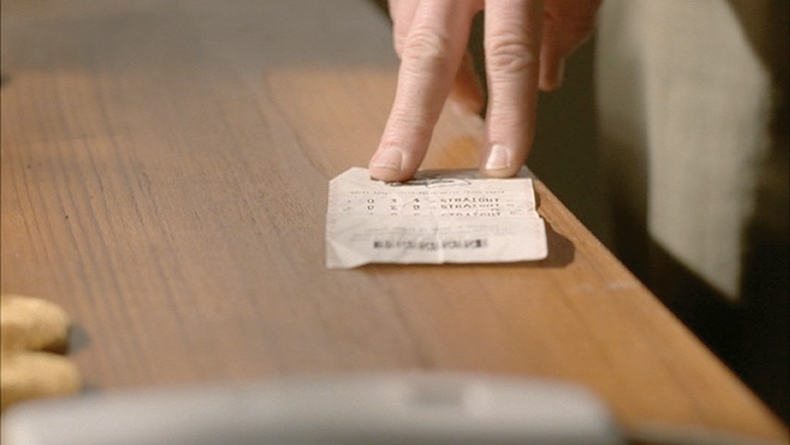
We have the best propmaster in the business, Mark Hansen. He had about a hundred of these tickets prepped in all possible variations of wrinkled and dirty, all of them dusted with the proper Albuquerque red iron oxide clay. There are two wonderful but opposing expressions: "God is in the details," and "The devil is in the details." The fact that both sayings exist is telling, because it shows you can either find greatness in the details or disaster in not paying enough attention to them. Anything you're going to focus your camera on—here it's two fingers on a lottery ticket—is the most important thing in the world at that moment. Always sweat the small stuff!
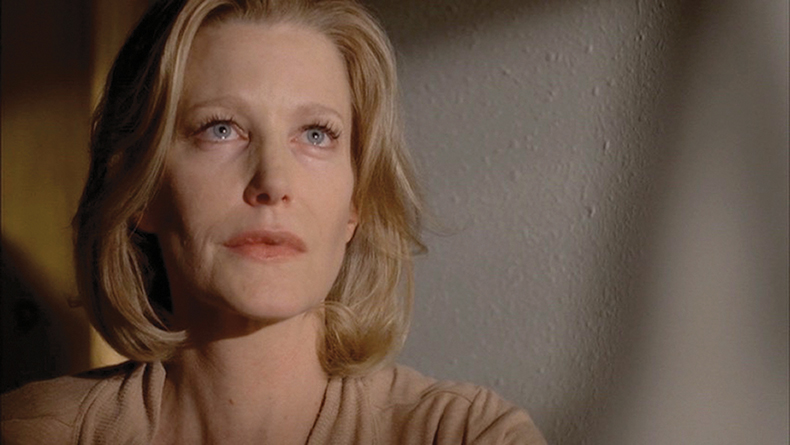
I get obsessive about matching head sizes in coverage. But here, it felt fitting that Skyler's shot was a bit wider than Walt's. Sometimes you simply go with your gut. I never want a flat, boring wall behind someone's head. I'll move heaven and earth to ensure there's as much depth as possible in every background. Here in this moment, I guess I didn't worry about it—because we're looking at Anna Gunn, whose face is the million-dollar subject of this shot, and her acting is heartbreaking.
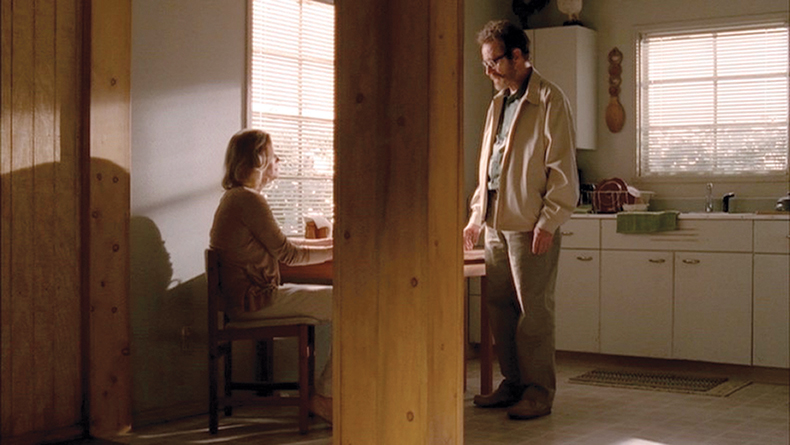
This is one of those shots you secretly want people talking about in film school. But really, it's knucklehead pop psychology: These two characters are divided emotionally, so let me put a pillar between them! That said, I am fond of this shot although its symbolism is overt. On a TV schedule, there isn't a whole lot of room for on-set discoveries. If you're smart, you'll have done your homework; I do believe that the director's most important job is during pre-production, not production. There's no less magic happening then. Just because there aren't 150 people standing around staring at you while you wing it doesn't mean you're not fulfilling your job as an artist. Have a plan that you busted your butt to come up with… and then depart from it. Maybe.
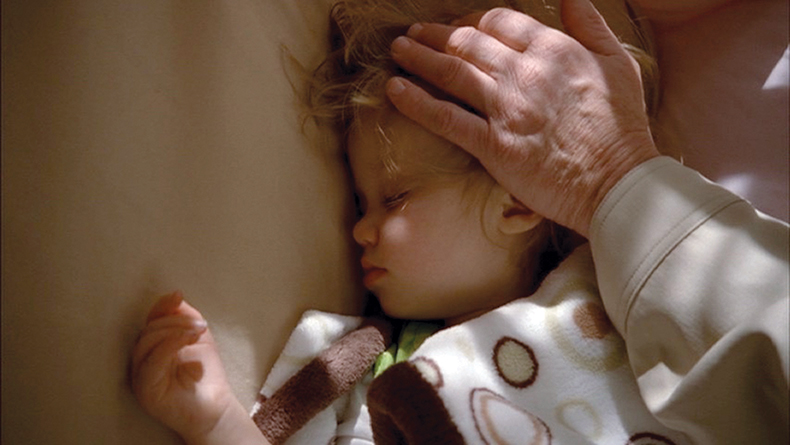
I remember this shot the most vividly because it came at the end of the day. Andy Voegeli, our "A" camera operator, had just become a father himself. He started crying so hard in the middle of it that he couldn't see through the eyepiece. We were all afraid the camera was shaking and that we'd have to redo it. Luckily, we didn't. Andy is a total pro, teary-eyed or not. Bryan and Anna were tearing up, too. I don't think there was a dry eye on the set. We had four or five babies on set, so we were whispering the entire time. Somehow, that made it even more special. This little girl was a dream to work with—she never once woke up. She had no idea she was on television. Hopefully, she does now.
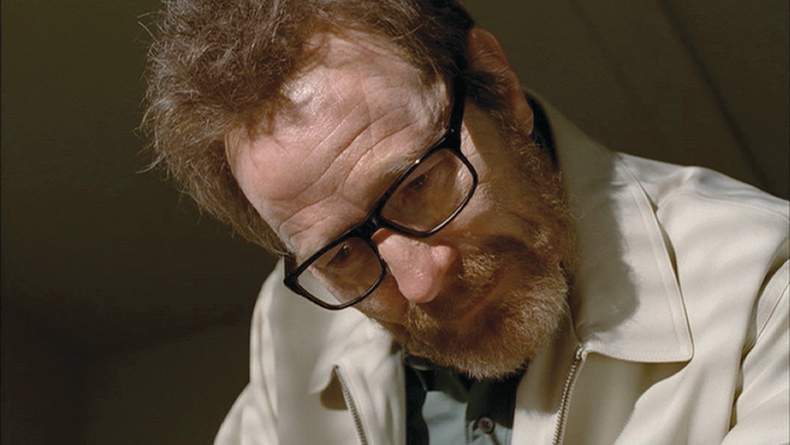
Here, Bryan was acting to an empty crib. Actors amaze me: they feel it on cue, take after take. As you can see from these shadows, we loved our Venetian blinds on Breaking Bad. Who doesn't? You think of all the great Warner Bros. gangster movies of the '40s. All those shadows of Venetian blinds cutting across Sam Spade's office? Steal from the best! Besides, we were on stage, so there's not much outside that window. I don't think we had the time or money to put up a Translight.
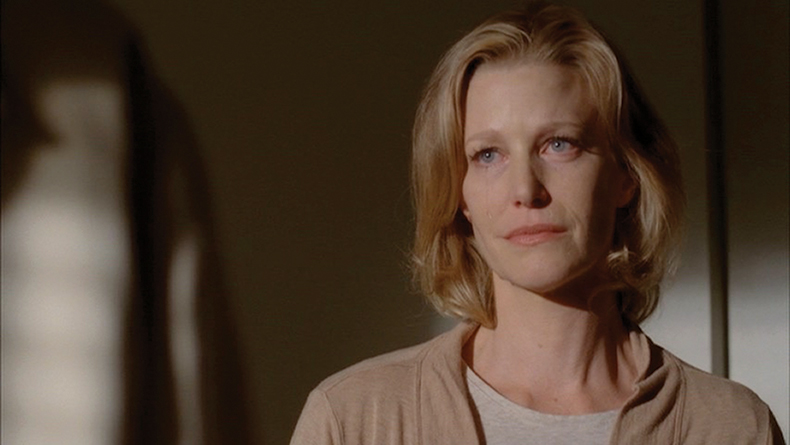
The final close-up for Anna in the series—and beautifully lit as always, thanks to our DP Michael Slovis and gaffer Steve Litecky. Right on cue, that tear fell down her cheek. Despite all my talk of pre-planning and the importance of doing one's homework, there were plenty of happy accidents on Breaking Bad. A word about wardrobe: Our characters were strictly middle-class folks on a budget, and a larger theme of our series was that a serious lack of money will motivate people to do a great many things. It was always a challenge for our wonderful costume designers, Kathleen Detoro and then Jennifer Bryan, to make these actors look good while dressing them in clothes from Target and Walmart. Although to be fair, making the actors look good wasn't necessarily the point.
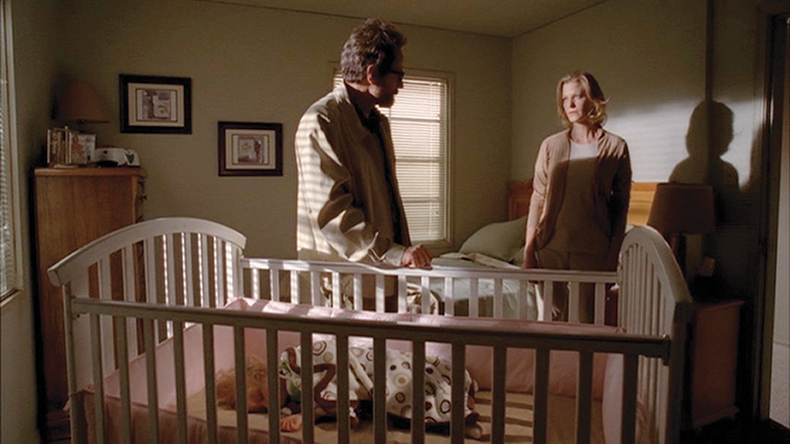
Walt gives the tiniest nod goodbye to his wife and exits frame right, headed to his destiny—which involves a whole lot of machine gun rounds. It was the quietest of quiet moments before the storm, but there's an ocean of feeling between these two characters. "Less is more" is a pretty good philosophy. The audience wants more here. But just because an audience wants something, it doesn't mean they'll be happy if you give it to them. If Bryan and Anna had gone bigger with their emotions, this scene would have had much less impact. I love their restraint in this moment. These two actors are the best special effect a director could hope for.